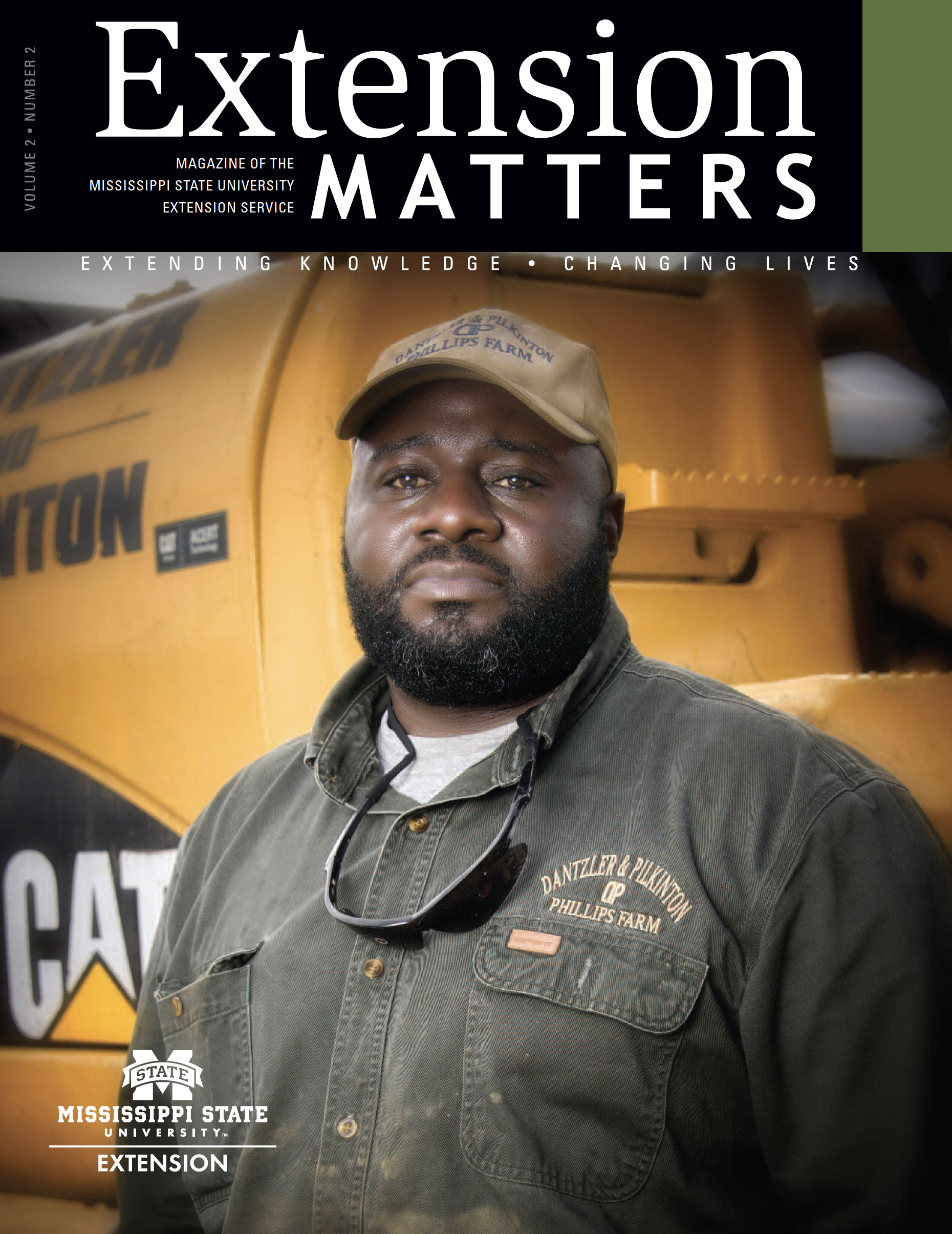Managing the Garden

Bobby Watkins, Mississippi Forestry association 2015 Tree Farmer of the Year, with his wife
Tree farmer of the Year collaborates with Extension
Bobby Watkins’s selection as the Mississippi Forestry Association’s 2015 Tree Farmer of the Year was the culmination of a career in forestry and a lifetime commitment to his family tree farm in Aberdeen. The Mississippi State University alumnus and retired forestry technical specialist for BASF now dedicates most of his time and resources to overseeing and maintaining Coontail Farm.
The 240-acre plot is known in Northern Mississippi not only for its loblolly pine timber production, but also for its wildlife friendly habitat for hunting and fishing. The farm even functions as an educational model for aspiring landowners. Watkins’s mother, Martha Bourland, inherited the land from her father, Amos Rye, and shared it with her children, including Watkins’s brother, Richard, and his sister, Martha Jane—both also MSU graduates.
The land has been in the family for four generations. Rye purchased the tract in the 1950s and grew soybeans and cotton on most of it. It was during that same decade that Watkins’s family first consulted with the MSU Extension Service for advice on the cotton acres they were managing.
“Since then, I’ve worked closely with Extension on several projects,” Watkins says. “All the decisions we’ve made on proper management of Coontail Farm have been based on recommendations and research from the Extension Service, and the quality and value of the property has improved. I think the easiest way to avoid a major long-term mistake when facing a decision that could affect the next 20 to 30 years in the life of your property is seeking expert advice from researchers and agents with MSU Extension.”
The family began converting the land to forest in 1986 when pine trees were planted and the land was enrolled in the Conservation Reserve Program. About 20 years later, the plot became a certified tree farm. Obtaining that status requires a written forest management plan that reflects the landowner’s objectives for the property, his or her knowledge of natural resources, and a sustainable strategy for protecting both.
“We have a lot of tree farmers in the state who don’t have written management plans,” explains Extension Forestry Specialist John Kushla. “To be certified, there has to be some plan that a third party can inspect showing the property is being managed in a sustainable manner.”
Part of the requirements for Watkins’s farm to achieve certification included his incorporating a technique known as quality vegetation management, or QVM, with Extension. QVM involves using prescribed fire and herbicide to encourage the growth of natural vegetation to create additional deer forage. A team of MSU students collected plant samples to determine the quality and amount of forage produced. Over time, the QVM treatment produced abundant forages because it removed low-quality hardwood brush.
Watkins worked with Kushla to conduct another study on land set aside for trials. He thinned pines at different levels of growth to observe the resulting effects on wildlife habitat.
“The study helped provide credibility to the theory that, if you take out a lot of trees and open more of the stand up to sunlight, you create more habitat for wildlife,” Kushla says. “You’ve got to have a wildlife objective in timber management to justify more thinning to promote a wildlife habitat. We were able to show that this balance is beneficial for both the continued growth and the quality of the timber as well as the wildlife habitat.”
This collaboration is just one of many between Extension and Watkins. He now regularly hosts many educational Extension programs.
“We’ve hosted several courses on Bobby’s land—mostly thinning, burning, and general management workshops,” Kushla remembers. “There is a combination of indoor and outdoor instruction in these courses. The students measure trees and use data to determine whether a pine stand is ready for thinning. We’ve done forestry and wildlife field days there, where people who are learning to manage property of their own look at management aspects.
“Bobby’s farm is the ideal model for the balance you want to see between timber and wildlife management.”
Watkins’s property has also played host to many garden clubs and is open to groups for tours. He reaches out to the public through social media to provide information about how proper wildlife and timber management affects both air and water quality.
“I have an excellent working relationship with John. He’s been behind studies looking at the thinning of trees and the impact of thinning regimes on wildlife habitat conditions,” Watkins says. “His study helped provide definite numbers for landowners as they consider their objectives when they thin their pine plantations. It also provides economic data on the value of the trees that are left standing.
“We’ve also consulted with Extension on the general management of our farm,” he adds. “After moving into the CRP (Conservation Reserve Program), that contact and advice became much more important in looking at all the parameters of forest management.”
Monroe County Extension agriculture and natural resources agent Randall Nevins has also worked alongside Watkins as a colleague in the county’s forestry association, and he has taken timber buyers to Watkins’s land for educational programs.
“He’s always been good about letting us go out there and teach the public how to take care of property and how to manage timber. He’s taken what he’s learned and turned it into a good workshop for anyone else who wants to do something similar,” Nevins says. “You can see how well managed it is as soon as you step foot on it. He has been a big asset to the county, and we can always count on him to help us.”
Fellow forester Michael Hughey of Smithville was one of several who nominated Watkins for State Tree Farmer of the Year. Hughey says Watkins’s practices are designed to improve the environmental quality of the area.
“Bobby has used his family’s farm on many occasions to show other landowners how you can take a spot of land, put some time and care into it, and manage it to help it produce both a healthy forest and a variety of wildlife,” Hughey says. “He was the one who first began the QVM practice and has implemented it throughout his pine plantations with great results. He is very adamant about improving the habitat for a variety of wildlife through spraying, burning, and thinning.”
MFA’s selection of Watkins as Mississippi’s Tree Farmer of the Year makes him eligible for national recognition through the National Forest Landowners Association. But for Watkins, taking care of the land is not about titles but about his family—both the ones who invested in the land before him and the ones who will come after him.
“I’d say it’s our God-given responsibility to manage the garden,” Watkins says. “That’s why trying to preserve the quality of the air, water, and habitat for wildlife has always been important to me. The Extension Service has played a significant role in helping me improve the quality of the land that has been so dear to our family for many years.”


